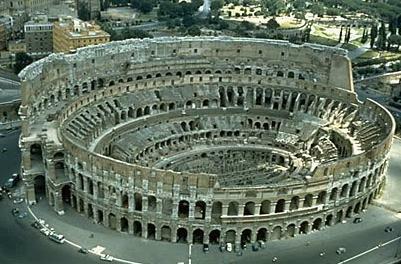What is a roman circus

The Roman empire It has been one of the great civilizations in the history of mankind. An important part of the life of the Romans was leisure, people attended events in different buildings in the city to enjoy the skill of the talented. One of these buildings was the Roman circus, where the Romans could see different sporting activities, such as charioteer races. In this lesson from a TEACHER we are going to talk about what is a Roman circus with its parts and characteristics, so that we can understand the importance of this event for the Romans.
Index
- The civilization of Ancient Rome
- Characteristics of the Roman circus
- The parts of the Roman circus
The civilization of Ancient Rome.
To get to know the different sections that make up the lesson of "what is a Roman circus with its parts and characteristics", we must first know the civilization who created this kind of circus, Ancient Rome.
Ancient Rome was one of the most important civilizations of the history of mankind. Its advances in different sectors have influenced up to our times, being one of the greatest influences in our society. In its greatest epoch of splendor it reached from Great Britain to the Sahara desert, and from the Iberian Peninsula to the Euphrates, being one of the greatest empires in history.
Rome underwent many changes throughout its history, going from monarchy to republic and from republic to empire. But in all these periods the passion for leisure was characteristic, creating numerous shows for the people, such as the Roman circus.
In this other lesson we will discover the history of sports in ancient Rome.

Image: Slideshare
Characteristics of the Roman circus.
The Roman circus is one of the most important facilities in Ancient Rome. It was next to the amphitheater and the theater the greatest source of entertainment in the town. Events such as horse races, chariot races or horse shows were held there.
Has his origin in ancient Hellenic racetracks, from Ancient Greece. The Greek model was imitated by the Etruscans, who were looking for an activity so that the people could celebrate holy days. Over the centuries it evolved to be a kind of distraction for the people, the so-called “bread and circus”.
There were numerous Roman circuses throughout the Empire, but without a doubt the most important was the Circus Maximus of Rome. The circus had a capacity of about 300,000 spectators, which made it the Roman circus with the largest capacity that we know of.
In Spain, an important part of the Roman Empire, we also have a great variety of quite relevant Roman circuses. Some of them are:
- Roman circus of Mérida: It had a capacity of 30,000 spectators, being the largest recreational building in the city.
- Roman circus of Tarraco: Located in the current Tarragona. With a capacity of 25,000 spectators, it remained active until the 5th century.
- Roman circus of Toledo: With a capacity of 13,000 spectators.
The parts of the Roman circus.
To continue with this lesson on the parts and characteristics of the Roman circus we have to talk about the different parts that make up the Roman circus. Although the parts could vary, in most cases all circuses had some common parts.
The Roman circus had a rectangular plan with a lateral semicircle on one of its sides. They had three sides well differentiated, which were:
- The cavea: It was the part where the spectators sat, that is, the stands. Although we can also find in this part the different exits and entrances to the circus. The entrance area of the participants, called the porta pompae. The ports of exit, which were known as jails. In addition to these we can also divide the cavea by the different parts in which the people sat. The ima cavea was the first row, where the senators sat, the most important people in the city where the shows were held, and the members of the equestrian class.
- The sand: The part where the show took place. There the chariot races were held, and for that reason it had a great amplitude, so that the chariots could perform their maneuvers more safely. The arena had two goals, the prime goal, located on the curve, and the second goal, located on the sides.
- The spina: It was a rectangular-shaped construction that divided the arena into two parts. It did not have a central position, it was somewhat curved, that was done to facilitate the curves for the competing cars. It was the most decorated element of the circus, being covered with different mosaics, or crowned with statues.

Image: Pinterest
If you want to read more articles similar to What is a Roman Circus - Parts and Features, we recommend that you enter our category of Story.


![Art NOUVEAU architecture: characteristics and examples [with PHOTOS!]](/f/331f9c4baf470e098e233c7f83565fee.jpg?width=300&height=200)
